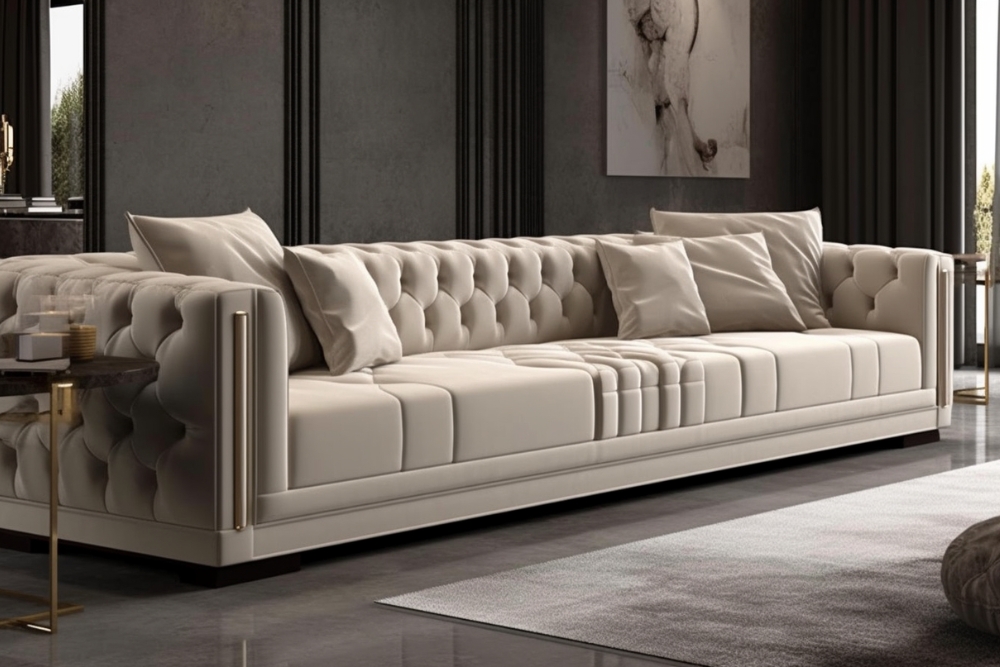The Evolution of Living Room Seating: Moving Beyond Traditional Sofas
The way we furnish our living spaces is undergoing a significant transformation. Traditional sofas, once the centerpiece of every living room, are gradually being replaced by alternative seating arrangements that better reflect modern lifestyles, spatial constraints, and personal expression. This shift represents more than just changing tastes—it's a fundamental rethinking of how we use our living spaces.

The living room has long been dominated by the standard three-seater sofa and armchair combination. However, recent years have witnessed a remarkable shift in how people choose to furnish their living spaces. From modular options to floor seating, the evolution of living room furniture reflects broader changes in lifestyle, spatial awareness, and personal expression. This transformation goes beyond mere aesthetics, offering practical benefits that address the needs of contemporary living.
The Decline of the Traditional Sofa
The classic sofa—with its fixed form and permanent place against the wall—is losing its once-unquestioned dominance in home furnishing. Several factors contribute to this shift. Urban living spaces continue to shrink, making bulky traditional sofas impractical for many households. Additionally, younger generations are embracing more nomadic lifestyles, moving frequently for work or personal reasons, which makes investing in heavy, difficult-to-transport furniture less appealing.
Consumer research indicates that many homeowners and renters now prioritize versatility over tradition. The rigid, one-purpose nature of conventional sofas increasingly feels outdated in an era where spaces often need to serve multiple functions—from living room to home office to guest bedroom, sometimes within the same day. This practical need for adaptability has accelerated the move away from furniture pieces that cannot easily transform or relocate.
Embracing Modular and Flexible Seating
Modular furniture systems have emerged as the natural successor to traditional sofas. These customizable arrangements consist of individual sections that can be reconfigured based on changing needs or spatial requirements. The appeal lies in their adaptability—components can be added, subtracted, or rearranged to create different seating configurations, from conventional sofa shapes to conversation pits or separate seating islands.
Beyond modularity, contemporary seating options often feature multifunctional elements. Ottomans that serve as coffee tables, storage units, or additional seating; sofa sections that convert into beds or chaise lounges; and pieces that can be easily moved to create different social arrangements all represent this trend toward flexibility. This approach to furniture design acknowledges that modern living spaces must work harder and smarter than ever before.
The Rise of Floor Living
Perhaps the most dramatic departure from traditional seating is the growing popularity of floor-level living arrangements. Influenced by practices from various cultures—Japanese tatami rooms, Moroccan floor cushions, or Middle Eastern majlis seating—many households are experimenting with low-profile or ground-level seating options. Floor cushions, poufs, low platforms, and floor mattresses offer alternatives that completely reimagine how we occupy space.
This trend connects to broader wellness movements that question conventional furniture’s impact on posture and physical health. Proponents suggest that floor sitting encourages more natural positioning, greater movement variety, and better physical engagement than standard sofa sitting. The aesthetic effect is also significant—rooms appear more spacious and fluid without bulky furniture blocking sightlines, creating a more relaxed, informal atmosphere that many find appealing.
Personalization and Eclectic Style
Today’s approach to living room design increasingly rejects the matching furniture sets that dominated previous decades. Instead, eclectic combinations of different seating types—a small loveseat here, a statement chair there, floor cushions elsewhere—allow for more personalized expressions of style and function. This mix-and-match approach permits greater creativity and adaptation to individual needs.
The movement toward personalization extends to materials and aesthetics as well. While traditional sofas often featured neutral, safe choices meant to last through changing design trends, contemporary seating embraces bolder colors, interesting textures, and more distinctive forms. Many consumers now view their seating choices as expressions of personal style rather than long-term investments that must remain visually unobtrusive.
Benefits Beyond Aesthetics
The evolution in living room seating offers practical advantages beyond visual appeal. Flexible seating arrangements can adapt to different social situations—expanding for gatherings or contracting for intimate conversations. This adaptability proves particularly valuable in smaller living spaces where every square foot must serve multiple purposes.
Environmental consciousness also plays a role in this shift. Modular pieces can be repaired or replaced section by section rather than requiring whole-furniture replacement when damage occurs. Additionally, lighter, more mobile furniture pieces often use fewer materials in their construction and can move with their owners through multiple homes, potentially reducing furniture waste and extending useful lifespans.
The financial aspect cannot be overlooked either. While high-quality modular systems can be expensive initially, their adaptability may represent better long-term value. Rather than replacing an entire sofa when needs or spaces change, modular components can be reconfigured or selectively updated, potentially offering economic advantages over time.
Integrating New Seating Concepts
For those interested in moving beyond the traditional sofa without completely abandoning comfortable seating, several transitional approaches exist. Starting with a smaller loveseat as an anchor piece while incorporating alternative seating elements allows for gradual experimentation. Similarly, selecting a modular system that can initially form a conventional sofa shape but later separate into different configurations offers flexibility without immediate radical change.
Ultimately, the evolution of living room seating reflects broader societal shifts toward flexibility, personalization, and multifunctionality. As living patterns continue to evolve, our furniture choices will likely continue adapting to support how we actually live rather than adhering to conventional expectations. The decline of the traditional sofa doesn’t signal the end of comfortable living spaces—rather, it represents an expansion of possibilities for creating living environments that better serve contemporary needs.




